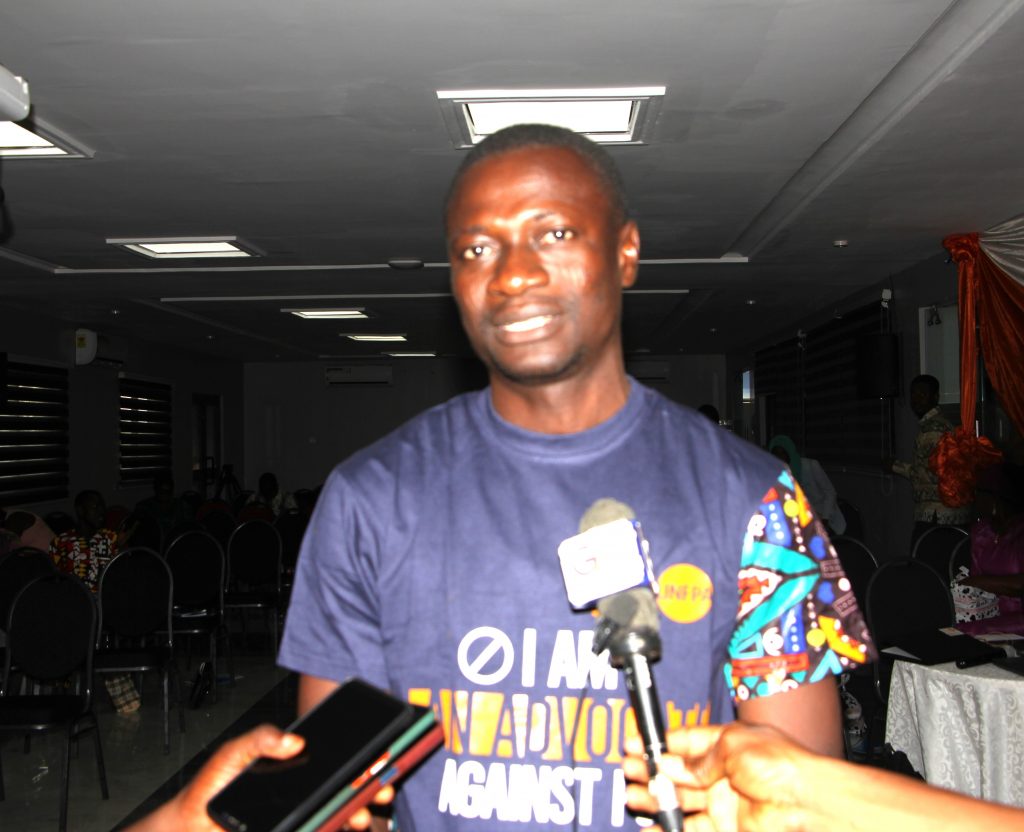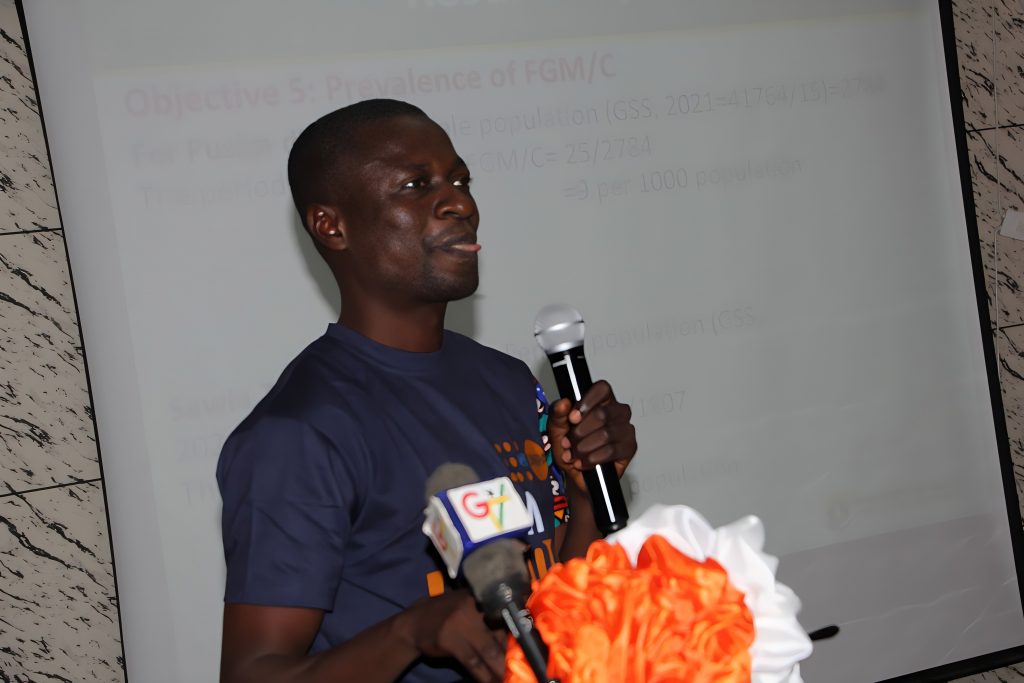A survey carried out in some selected border districts in the Northern part of Ghana by the United Nations Population Fund (UNFPA) uncovered that some pockets of secret female genital mutilation is still practiced in the four selected districts in the part of Ghana.
The baseline survey is the first of its kind in Ghana since its inception of Female Genital Mutilation over some decades ago. the baseline was to zoom into the four districts namely; Pusiga, Kassena Nankana West, Wa East and Sawla Tuna Kalba districts to confirm the pocket of secret practices that was happening in the four districts.

During a presentation in Bolgatanga, Mr Atubiga Alobit Baba a co-consultant who detailed the survey revealed that out of 1000 women in the Pusiga district of the Upper East Region, nine women had been circumcised, while in the Kassena Nankana district, out of 1000 women, about 30 women might have been victims of Female genital mutilation.

The Sawla Tuna Kalba district in the Savana region and Wa East district in the Upper West Region also had some pockets of FGM still ongoing. In the part of the Wa East district, out of every 1000 women , 10 women would have been victims of FGM, while in Sawla Tuna Kalba district, out of every 1000 women in the area, 20 women would have also been victims of FGM.

“So in the Pusiga district, we use the female population from the National Stastical Service of 2021 with the 15 number of electoral areas in the Pusiga district because it was a challenge actually getting the communities numbers. So we use the electoral areas, if you do this simple mathematics for the Pusiga district , you come to get nine per thousand population, it means that if you go to the Pusiga district and you sample thousands females in that district or community, the probability, the chance that nine of them would have under gone FGM is high, then if you go to Sawla Tuna Kalba district we also did the same mathematics using their electoral areas which is 33 then we come realized that women prevalence twenty 20 per thousand population because these are simplify by two per hundred population simply put if you put that community and you sample females thousand of them the probability that twenty of them would have undergone FGM is also high.
Then if we go to Kassena Nankana west district, the prevalence gave us 30 per thousand population, simply put if you go those communities and you sample 30 women the probability 30 out of that population would have undergone FGM is high and if you go to Wa East District and the prevalence gave 10 per thousand population simply put in those communities if you are able to get thousand women the probability that 10 of that particular sum you have undergone FGM is also high”. He detailed.
Mr. Atubiga Alobit Baba bemoaned the movement of people a cross the borders in those districts where the survey was carried out as one cardinal factors that influences the practice of FGM as well as family ties to the neighbouring countries.
Female Genital Mutilation (FGM) remains a crime, the law against FGM ACT 741 of the Parliament of the Republic of Ghana entitled Criminal Code (Amendment) Act 2007 provides for imprisonment and/or fines for both the circumciser and those who request, incite or promote excision by providing money, goods or moral support a law and the law was passed in parliament in 1994 criminalizing the practice over 29 years.

Dr. Doris Mawuse Aglobitse, programs specialist and gender team leader of the United Nations Population Fund (UNFPA) on behalf of the Representative of the United Nations Population Fund (UNFPA) Dr. David Wilfred Ochan noted that about some 200 million girls and women globally have undergone some form of female genital mutilation.
Even though the practice was declining in many countries where it used to be prevalent, most of these areas are also experiencing a high rate of population growth – meaning that the number of girls who undergo female genital mutilation will continue to grow if the practice continues at current levels.
She added that the survey was influenced by some pockets of female genital mutilations in some parts of Northern Ghana.

“UNFPA
commissioned this research in this part of the country because both MICs 20218 survey results and 2021 population and housing census, indicated that the practice of FGM among women 15-49, is at 2.4 per cent with high rates in the Upper West (32.5percent) and Upper East (13.2per cent) Regions. (No of women aged 15-49 Ghana 341 UER 55 (16% of total) UWR 107 (31% of total)
The results indicate that Female Genital Mutilation/Cutting continues to prevail despite laws banning it in Ghana since 1994, when the parliament of Ghana enacted a law to ban the practice. The findings suggest that there are multiple factors influencing the practice. The reasons are categorized into controlling female sexuality, marriageability, tradition, prevention of death of females and infants and ensuring the health of mother and child. Other reasons are religious beliefs, to gain societal respect, pressure from society, the clitoris carries dirt, aesthetics, circumcisers’ beliefs and economic gain”
Source:mywordfmonline.com/Gaspard Ayuureneeya